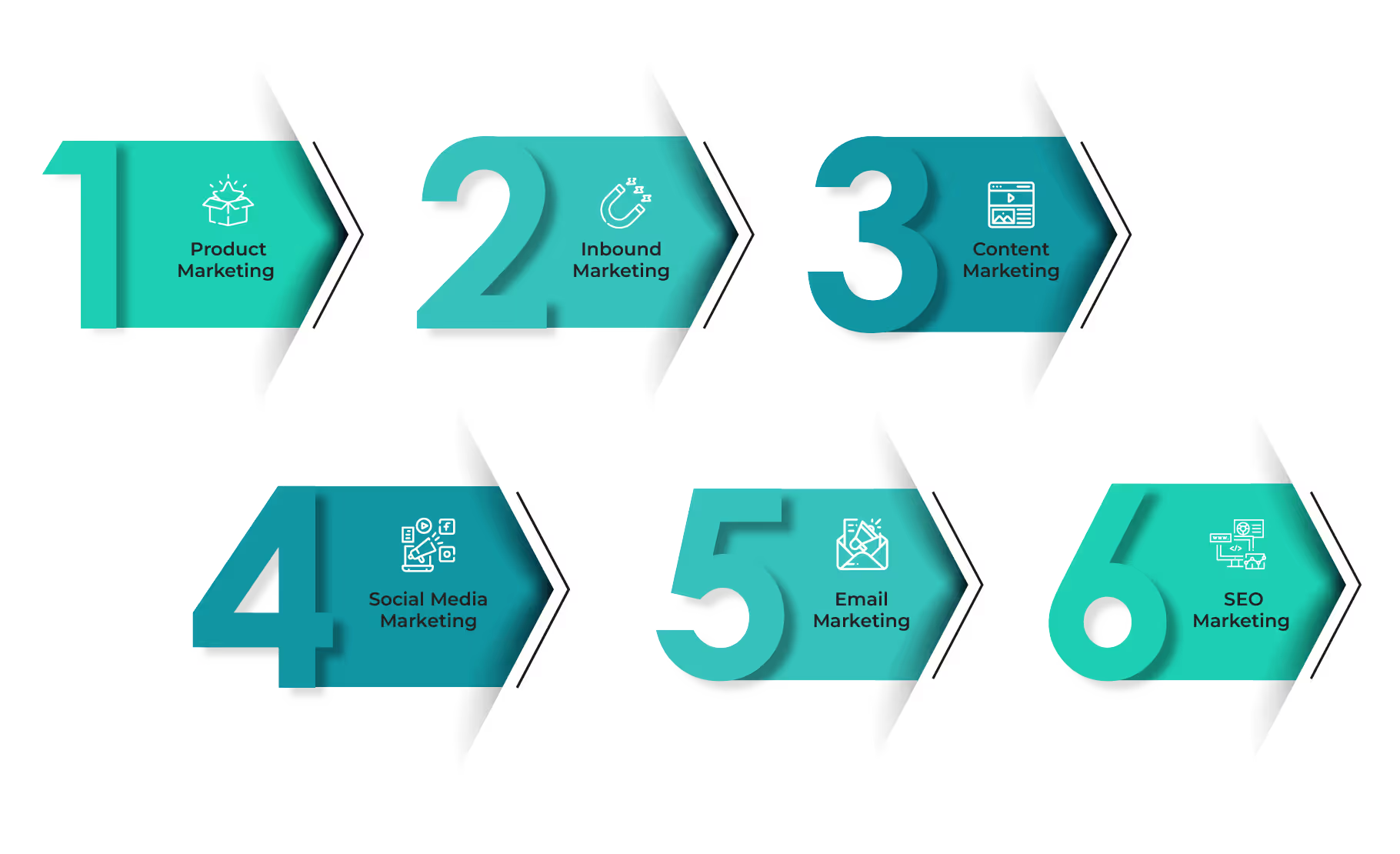
Blog
OKR Marketing: The Key to Unlocking Your Business Potential
October 19, 2023


Key Insights
“The best marketing doesn't feel like marketing.” - Tom Fishburne
Businesses have always thrived on marketing.
With the advancements in technology, social media, and artificial intelligence, the marketing potential is immense.
But in the wide variety of options available, how do you determine what's the most effective for you?
In whatever endeavor you set out in, having a sense of direction is important to ensure the success of that journey. Similar is with marketing as well, including the critical aspect of 'sales recruitment.' Knowing what your objectives are and what results you expect out of it helps make the best use of resources, time, and effort.
In this article, we will explore bringing in that structure to your marketing efforts by understanding OKRs for marketing, the step-by-step process to building and setting OKRS, and its examples.
Scroll down.
What is a marketing OKR?
Marketing Objectives and Key Results (OKR) refers to a marketing framework where the objectives are set and are measured by a set of key results. This provides a roadmap for the marketing team while strategizing their efforts to successfully fulfill the goals.
A marketing OKR example will be creating an objective X that provides a focus for the team to work towards achieving it. Setting key results at each point towards the final destination helps monitor the effectiveness and track the progress. In addition, the step-by-step progress of achieving the goals also helps the marketing team be motivated.
Hence, marketing OKRs are important as they streamline the process and help focus on successfully achieving the final objective.
How to set OKRs for marketing
Building OKRs for marketing requires a step-by-step process where you evaluate the company objectives and pave a path to achieving them.
Let’s look into one way of setting B2B marketing OKRs.

Define Your Objectives and Results
Before setting out and planning a marketing plan, companies must be clear about what they want to achieve and how they plan to achieve it, with a focus on revenue attribution. Getting clarity of the situation by evaluating the company structure and analyzing the market will help in building an objective and result-oriented marketing plan that accurately tracks how marketing efforts contribute to revenue.
Assign Achievable Targets
Leveraging sales performance management solutions can streamline the process of setting achievable targets, including sales OKRs, by providing valuable insights into individual and team performance, ensuring that objectives are tailored to the team's strengths and resource availability, thus maximizing motivation and success.
Determine Ways to Measure
Setting a B2B marketing OKR will help focus on what needs to be achieved. But in the long journey to actually fulfilling it, metrics and key results are the factors that ensure consistency and motivation. Determining indexes to measure the effectiveness of the strategy will help the team decide whether to continue or re-strategize to reach the planned objective.
Strategize Marketing Plans
The primary purpose of OKRs for marketing is to help strategize effective marketing plans. Having a framework that shows the goals to be archived and the key results expected will give clarity on the initiatives to be planned to achieve the target and streamline the process.

Track the Progress
The primary purpose of determining the key results for your marketing, in conjunction with a well-defined sales commission structure, is to track its progress, enabling a clear correlation between marketing efforts and their impact on both revenue and compensation for sales teams. Monitoring the effectiveness of your strategies and tracking the progress helps understand how much of the efforts have seen fruition and how much needs to be achieved.
Giving a structure to your marketing efforts will help in enhancing the operations and boosting performance.
To read more about marketing, check The Ultimate Guide To Successful B2B SaaS Marketing Strategies.
Example of marketing OKR?
With multi-channel marketing approaches, companies must take an OKR for marketing approach to measure the efficiency of each initiative and thereby determine its effectiveness.

Product Marketing
When marketing objectives are set on the product it is termed Product marketing OKR. Product marketing OKR examples include building a new feature within three months, improving product engagement by 10%, increasing product use by 100 users, etc. Any marketing objective that tries to enhance the product comes under product marketing OKR.
Inbound Marketing
When your ideal customer comes searching for you, that is a result of inbound marketing. This includes blogs, whitepapers, newsletters, e-books, webinars, social media posts, video content, advertisements, etc. Objectives for inbound marketing will be to increase the website traffic and brand awareness by downloading and engaging these resources to enhance your sales pipeline.
Content marketing
Content marketing comes under inbound marketing. One reason for this hype is that along with increasing brand awareness and enhancing the sales funnel and pipeline, it projects companies as thought leaders. The objective of content marketing is to brand companies as voices to look out for in their field of expertise and thereby enhance conversion rates.
Social Media Marketing
The prominence of social media platforms is increasing in marketing. Companies set targets to increase their followers, likes, and comments, enhance engagement and click rate, and improve their social media presence as part of their sales channel strategy to help boost lead generation and closing of deals.
Email marketing
Email marketing is an age-old way of marketing strategy that is still a successful way of approaching your target audience. With your ideal customer getting more than 10 emails per day, the objective will be to create an email campaign, send it to 500 audiences, increase the open rate, and thereby get a response to your outbound approach.
SEO marketing
Search engine optimization is the technique of increasing the traffic to your website organically. This will be the primary objective while incorporating SEO marketing into your operations. In addition, SEO objectives also include being ranked first in the keyword search, improving the domain ranking, etc.
For further reading, check Empowering Sales Success With Predictive Sales Analytics.
Conclusion
Setting a goal and drawing a roadmap to achieving it makes the work half-done.
Especially in business operations, building a structure and system in all areas will help monitor the performance, track the progress, and evaluate the effectiveness. Having clarity in the effectiveness and efficiency of your strategies is an advantage while planning your growth.
Marketing OKRs help you achieve all these objectives by evaluating the key results expected of them, similar to the benefits of MBO (Management by Objectives). This makes the process streamlined and keeps the team consistent and focused on their performance.
Incorporating tools like OKRs alongside a transparent sales commission calculator can further boost employee motivation by not only providing clarity in work objectives but also by offering a clear incentive structure that aligns individual efforts with overall business goals, leading to improved performance and productivity.
To read more about employee performance-related blogs, connect with Kennect. For more information, Book A Demo Today!
ReKennect : Stay ahead of the curve!
Subscribe to our bi-weekly newsletter packed with latest trends and insights on incentives.
Thank you! Your submission has been received!
Oops! Something went wrong while submitting the form.
Your data is in safe hands. Check out our Privacy policy for more info











